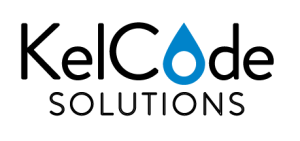Inkjet coding and marking is a fundamental aspect of product packaging and labeling across various industries. It involves the application of permanent or semi-permanent information such as batch numbers, expiration dates, barcodes, and logos onto products or packaging materials. This process plays a crucial role in ensuring product traceability, enhancing brand visibility, and complying with industry regulations.
What is Inkjet Coding and Marking?
Inkjet coding and marking involves using specialized printers to apply text, graphics, or codes onto various surfaces using inkjet technology. It is a highly versatile and cost-effective method, suitable for both primary and secondary packaging. In this process, small droplets of ink are expelled from a printhead onto the targeted surface, forming the desired prints.
Benefits of Inkjet Coding and Marking:
- Product Traceability: One of the key benefits of inkjet coding and marking is the ability to trace products throughout their lifecycle. By including batch numbers, expiry dates, or tracking codes, manufacturers can quickly identify and track individual products, enabling efficient recall processes in case of quality issues or regulatory compliance concerns.
- Branding and Marketing: Inkjet coding and marking allows businesses to imprint their logos, QR codes, or promotional messages directly onto the product or packaging. This approach not only enhances brand visibility but also creates opportunities for targeted marketing initiatives, including consumer engagement and loyalty programs.
- Compliance with Industry Standards: Many industries have strict regulations regarding product labeling and packaging. Inkjet coding and marking systems provide the flexibility to meet regulatory requirements by ensuring that essential information is clearly and consistently displayed.
- Production Line Integration: Inkjet coding systems can be seamlessly integrated into production lines, improving production efficiency and reducing downtime. With advanced technologies such as automated line synchronization and remote data entry, manufacturers can minimize errors, increase accuracy, and enhance overall production speeds.
- Environmentally Friendly: Inkjet coding and marking employ environment-friendly water-based inks, which have a minimal impact on the environment. These inks are free of harmful chemicals, making them safe for use on various products, including food, beverages, and pharmaceuticals.
The Future of Inkjet Coding and Marking:
As technology continues to advance, inkjet coding and marking systems are becoming even more efficient and versatile. Innovations such as high-resolution printing, enhanced connectivity options, and integration with cloud-based data management systems are revolutionizing this field. Additionally, the use of UV-curable inks allows for faster drying times and increased durability, ensuring the imprints remain intact throughout the product’s lifecycle.
Inkjet coding and marking systems have proven to be indispensable tools for enhancing product traceability, complying with regulations, and improving overall operational efficiency. With their ability to print high-quality codes and markings on various surfaces, these systems offer businesses a cost-effective solution for labeling and branding. As technology progresses, inkjet coding and marking will continue to evolve, enabling industries to meet ever-increasing demands for traceability, sustainability, and efficiency.
